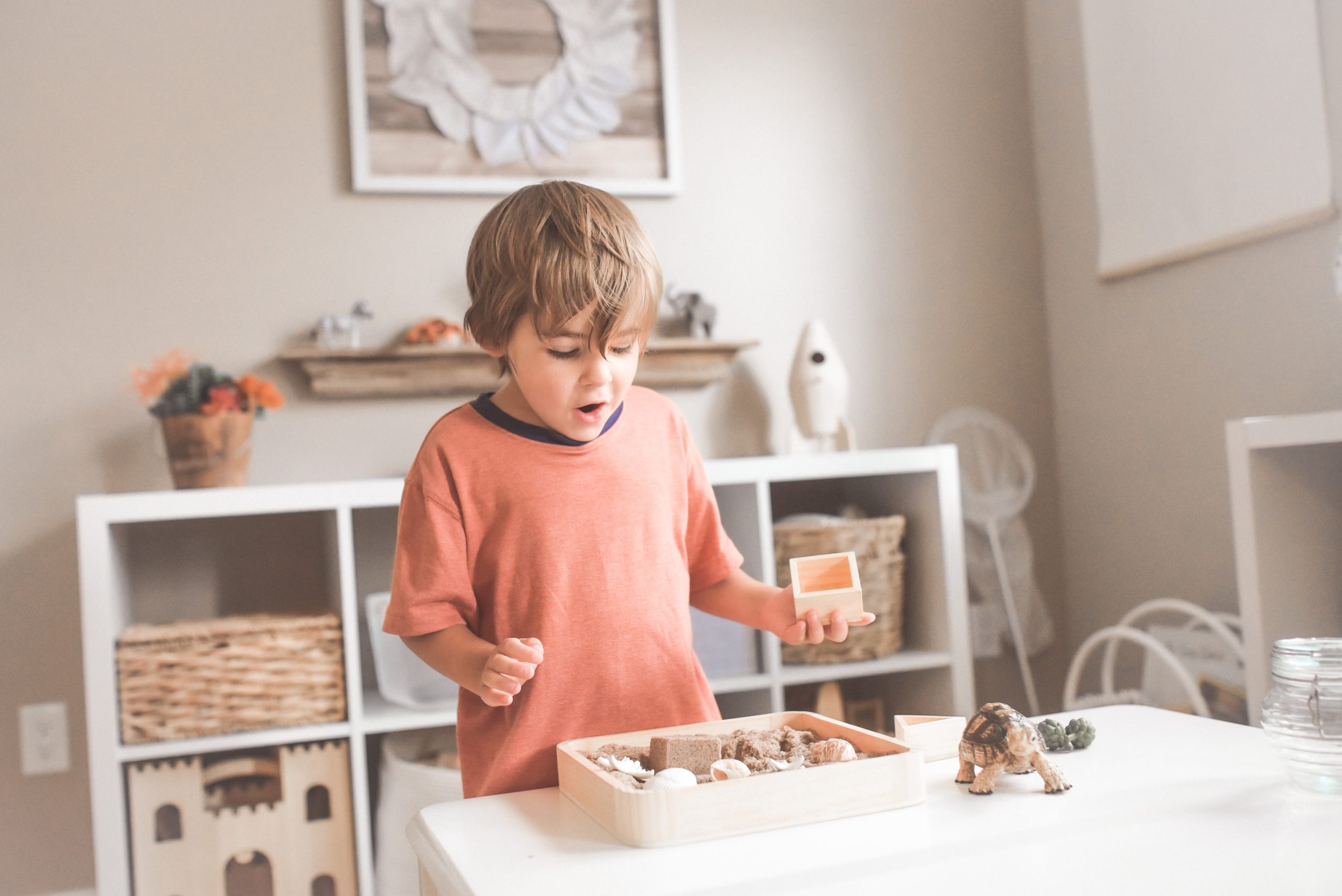April 18th, 2022
3 Invitations to Independent Play
It’s easy to be consumed by the pressure to teach teach teach our kids. Their letters, numbers, how to be a good human – it’s overwhelming, and in my opinion largely unnecessary. There’s a natural order and process to all the human qualities we desperately want for our children. In the early years, play is a tremendous tool for the unfolding of human potential. And within the magic of play for children, lies the magic of independent play for parents! There is nothing more empowering than seeing your child lost in play, giving you time to yourself, as long as you stay nearby of course ;).
Sometimes we can be so involved in our child’s learning that we even take control of their play. It can then be frustrating for parents when their children don’t seem capable of playing independently. But what else can we expect when we are always calling the shots and telling them how to play. Below are three of my favorite invitations to play, as well as tips for nudging our cherubs towards the magic of independent play.
Building and Imagination
A little bit of organization can go a long way with this invitation to play. You likely have a couple different building supplies around the house that your child has lost interest in – legos, blocks, train tracks, you get the idea. Spend a little bit of time storing these away in separate containers.
If your child has had access to all of these at the same time, they can get overwhelmed, which stunts creativity. Contrary to popular belief, fewer toys actually promotes deeper play.
After putting one or all of these containers away for a couple weeks, set one up while your child is asleep or away. Removing clutter around the play area encourages the child to focus on the setup, which takes the play to a much deeper level.
You can begin to build something with the supplies, or set them up in color coded piles, anything to give them a new edge.
As far as the big reveal – you can simply allow your child to stumble upon your masterpiece; or if your child will likely need some support getting started, invite them to play with you. Excuse yourself once they are lost in play – tell them you’ll be back in a few minutes to check on them. Very important – always follow through when you say you’ll be back! Sneaking away alarms children, and no one can get lost in play when they are alarmed.
The key to promoting independent play, is to become the observer. Play alongside your child, allowing them to feel comfort by your presence but hold back the urge to tell them how to play.
Art Supplies
Using different art supplies is my favorite invitation to play. The possibilities are endless. This is a great outdoor activity, for obvious reasons.
It can be so tempting to encourage your child to be tidy, and direct this messy play – but the more you leave them to their own creativity, the more beneficial it will be for them. Allowing your child to have full control over mediums like paint is how they build control and understanding around how to use it. For example, at first they might pour all of the paint out, but soon they will pour less, and all of a sudden you’ll be amazed at how tidy they are!
Here are a few art inspired invitations to play…
A bowl of stickers or stamps with a big piece of cardboard to stick them on. For small children, partially peel back the stickers so they can do the rest themselves!
Offer several small bowls of paint, there are so many different types – finger, glitter, watercolor – all offering a different sensory experience. This is a great opportunity to take the play outdoors, especially if messes make you a little queasy. ?
Switch up the paint brushes, use fruit or veggies for brushes, offer paper, leaves, rocks or anything else available you have lying around for them to experiment with. For older children you can prop open a book for inspiration!
Playdough! A hit with adults too! 😉 Offer a few different colors, a rolling pin, something to cut the dough with, cookie cutters and other sculpting tools. Don’t be afraid to get lost in this one yourself – play is just as good for parents as it is for kiddos.
Mini Worlds
Children learn social and emotional skills through play. When they are experiencing emotions or other experiences they can’t articulate yet, play is how they can work through it. Creating mini worlds allows children to construct and play out their life experiences and feelings. This is all about building, tearing down and building again.
A box set on it’s side, with little people, animals or cars inside. Use a blue towel to signify water, draw people, windows or a roadway on or inside a cardboard box. Keep it simple and open for the child to run with it in any direction.
If your child isn’t used to playing alone, inching towards independent play, will be the name of the game.
Remember to be the observer as much as possible, help them when needed, but also allow your child to get frustrated while wrapped up in your loving presence. Play is going to bring up all kinds of frustration for them. For children to truly learn how to deal with frustration, they must come up against what they cannot change, allow the sadness to flow, and come to terms with moving on. I have an entire blog post about supporting your children’s emotion. You can read it here.
For more attachment-focused parenting tips please subscribe to my newsletter!

